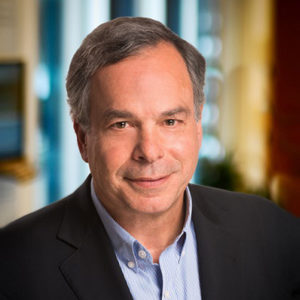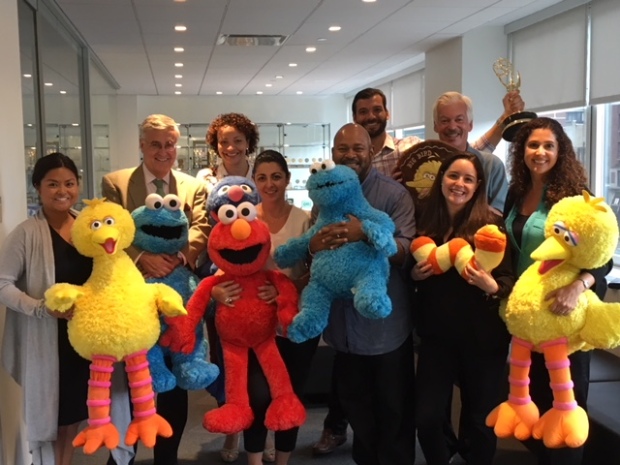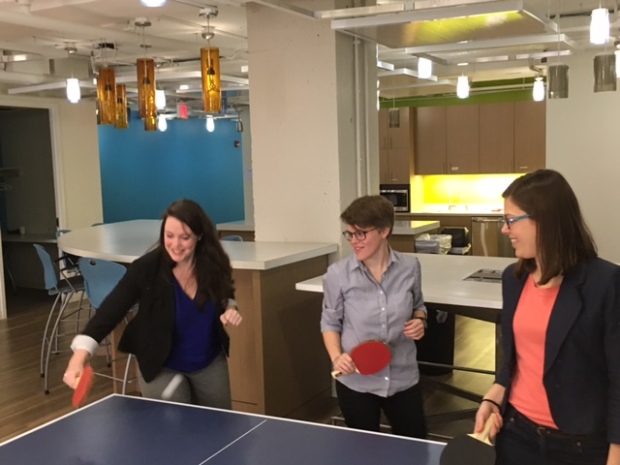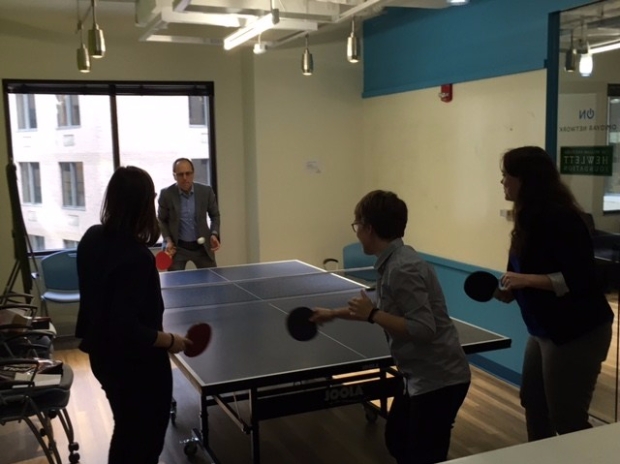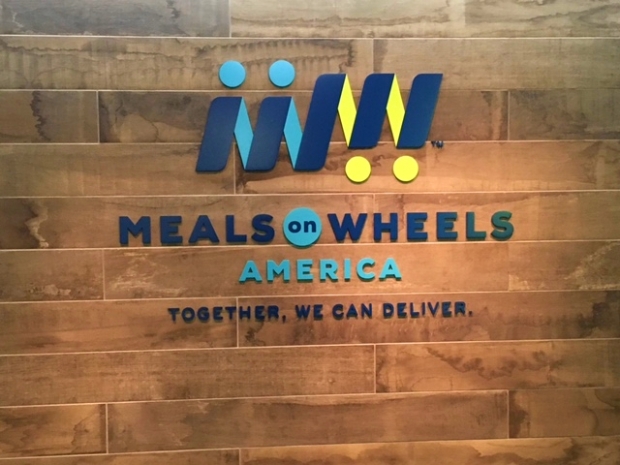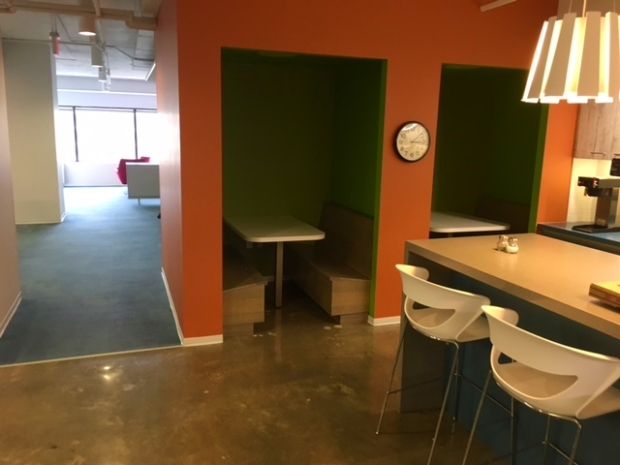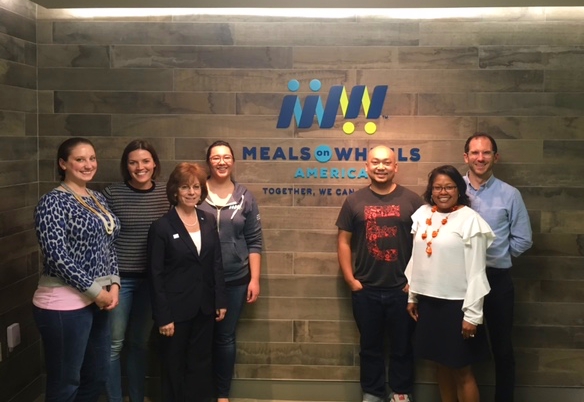We have found a new home! Kindly visit this link in our new website here: https://www.denver-frederick.com/2017/11/09/candice-schmitt-director-people-operations-team-rubicontalks-corporate-culture-denver-frederick/
Better Than Most is a regular feature of The Business of Giving, examining the best places to work among social good businesses and nonprofit organizations.

Candice Schmitt © teamrubiconusa.org
Denver: It is no coincidence that the very best nonprofit organizations also happen to be the very best places to work. And that is certainly true in the case of Team Rubicon. And here to discuss it with us is Candice Schmitt, the Director of People Operations at Team Rubicon.
Good evening, Candice, and welcome to The Business of Giving!
Candice: Thank you so much. Happy to be talking to you.
Our mission is really dual purpose. We provide the service to communities that have been affected by disasters, by helping residents begin the cleanup process and by continuing their service after taking off their uniform.
Denver: Before we look at your corporate culture and work environment, tell us about Team Rubicon and the mission and objectives of the organization.
Candice: Sure. Team Rubicon is a veteran-led disaster response organization that unites the skills and experiences of military veterans, the first responders, to rapidly deploy emergency response teams. So that is the boots on the ground just as soon as the disasters strike. They’re usually there within 24 hours doing recon work and finding out how we can help building relationships at the local agency and seeing how we can best support them. And our mission is really dual purpose. We provide the service to communities that have been affected by disasters, by helping residents begin the cleanup process and by continuing their service after taking off their uniform.
Team Rubicon helps the veterans rediscover a sense of purpose, community and identity which is often lost after separating from the military. We’re really motivated by both of those things and I think it makes us a really unique player in the space.
Denver: Great mission. Well, some organizations might say they have a feedback culture. I know others describe them and they’ll say this, “Hey, we have a coaching culture or a data-driven culture”. What word or phrase would you use to describe your culture?
Candice: I would say our culture is truly like a family. And I think some organization say that because their employees hangout outside of work or know a lot about each other’s personal lives. And here, when I say that, I mean we communicate with candor and there’s an unspoken bond that exists among us. So, it’s a raw and honest and sometimes dysfunctional culture or community of people. And I believe, it’s a version of the camaraderie that exists in the military because we are such a military-centric group. But as one of our kick-ass civilian team member who can’t speak to, at first hand, to what the culture is like in the military, I can say it reminds me a whole lot of growing up in a family of six. So much love, so much chaos and yet you’d have it no other way.
Denver: Well described. What are some of the things that leadership does to sort of influence and shape the culture there?
Candice: I think the biggest thing that they do is they’re really just part of it. They’re just one of us. We’re a very flat organization. They’re approachable, easy to talk to and similar to how parents would in a household, like when they sense tension or a little bit of angst among the group, we all get called together to clear the air. They pave the road but then get out of the way for us and I think that’s how they lead by example and reinforce our camaraderie or culture.
Denver: Well, in every household, sometimes there’s a way of getting things done. And looking at your family, how does work get done at Team Rubicon?
Candice: This actually hits on a couple of our cultural maxims. First is our attitude and approach. And so, to those two things, we have a couple of things we see around here. One is everyone has a role and we know it. We know we can’t all be good at everything so we rely pretty heavily on our expert in a variety of subject matters. And sometimes, those experts are interns and sometimes, the experts are our C-suite staff. So, we pull in the people who know the subject matter best on the team regardless of their level. And we have an attitude that we describe as just gets shit done, whatever you need to do to get it done. We’re highly collaborative via in-person meetings, video conference, and we’re pretty motivated by a challenge. So I think, the combination of those things is really nothing that we don’t get done and we get it done just working together and removing roadblocks from each other’s way.
Team Rubicon’s Cultural Principles © glassdoor.com
Denver: Well, you know an organizational culture is built around values. And so many values of organizations kind of either sit on a piece of paper or on a website. How do your values get animated, communicated and then reinforced?
Candice: We do have the piece of paper as well. So we have them codified And within that document, we have more than just a list of our culture or values and what they mean but we also have a quote and a story to help bring that value to life for our staff. Our cultural values are not defined as the things that people possess when we hire them into our team but more the guiding stars as we make decisions in a highly autonomous environment. So these are, absent policy and procedure, we want these seven principles to guide your way. And so, we do have them documented. We have them on the walls of our offices. We have them in all of our conference rooms. So, they’re highly visible.
When we have new hires come on, they spend 45 minutes to an hour with our CEO and COO going over each of these principles and what they mean, what they look like in real life. So, following on to largely military stories or different events from history that reinforce these values. We use examples within TR’s history on where we’ve seen these values applied. They’re also built into our employee recognition programs so that we are reinforcing the behavior that we feel is consistent with these guidelines, again just so all staff really understands what they look like in real life. So the new hire orientation, they’re weaved into our programs and we always find a way to get them into content that’s presented at our all staff meetings. So, whether it’s just using the language or referring back to them, recognizing again, employees who really standout as those living by these guiding stars, we try and just make sure that they’re very much alive, active and referenced in everything that we do.
It’s the passion. Hands down, it’s passion. Everyone coming in, everyone going through our interview process, the folks I talk to who are leaving all say the same thing, the Wow is the passion. Everyone is here for something bigger than themselves. And that creates a really unstoppable force and an incredible energy that’s hard to describe. Nobody is here for themselves or the paycheck. It’s for something bigger than any of us can achieve individually.
Denver: Great stuff. Well, if I was one of those new hires, and let’s say I had been working there three months, and somebody were to ask me, what is the Wow of Team Rubicon, what do you think I might say?
Candice: It’s the passion. Hands down, it’s passion. Everyone coming in, everyone going through our interview process, the folks I talk to who are leaving all say the same thing, the Wow is the passion. Everyone is here for something bigger than themselves. And that creates a really unstoppable force and an incredible energy that’s hard to describe. Nobody is here for themselves or the paycheck. It’s for something bigger than any of us can achieve individually.
Denver: A lot of people in non-profit organizations leave those organizations because there’s just no clear road to advancement. There’s no place where they can go. What kind of things do you do to help promote the personal and professional development of an employee?
Candice: There’s a ton that we do. The beauty of being a small organization is we really have the opportunity to understand each person’s individual ambitions, skills, weaknesses for that matter. We do skills assessments to find strengths and how we can leverage them in people’s existing roles. Then we also have the opportunity to have one-on-one conversations whether it’s between people ops and our employees or employees and their managers to really dive into where they want to go and what it’s going to take to get them there. I’m actually really excited to say, in preparation for this, I just checked because I felt like I’d really been seeing a lot of advancement this year, and we haven’t even entered the year-end review cycle and we’ve already seen 21 of our 74 staff receive formal recognition of increased responsibility, increased scope and that’s through title changes, compensation increases, and just being recognized for really taking their role to the next level. We’re just at a point right now where everybody here really writes their own future. And for some folks, they’re really content in the role that they’re in and they want to continue to contribute in that way but for a lot of our folks here, they are looking for that next step and we offer certifications. We offer advanced education. But you have to come to us and tell us this is where I want to go and here’s how I want to get there. What do you think and it’s a really collaborative effort but when we’re very supportive of keeping our rising stars. We’re really excited about where we’re seeing people go and our future leaders really taking shape.
Denver: You also sound like you’re a kind place where people get a lot of feedback on how they’re doing.
Candice: Absolutely. We have the performance review process which is our formal feedback system and that’s every six months. However, we are, like I said, just like a family and that candor comes back into play here, we give feedback often in real time and very directly. It’s an environment that’s incredibly open to it and we’re very receptive and everyone, again, being here for something bigger than yourself, it’s very easy to redirect and apply that feedback because you know the impact it’s going to have is greater than just making you a better professional. It’s the ability to execute our mission with more efficiency and to be able to help more communities, more people, more veteran. So generally, feedback is given in real time and it’s just formalized twice a year and solicited twice a year but we request feedback or solicit feedback at all levels and we also do it as an organization from our employees via an employee satisfaction survey.
Denver: What role does technology and social media play in sort of joining the group together and promoting the workplace culture?
Candice: I think, it’s the same as anywhere else on this one, and word of mouth is actually our biggest asset. People who have touched the organization in some capacity, as a volunteer through the recruitment process, whether they saw us on- we’ve gotten a lot of media around our efforts in Houston so that has been pretty powerful but I think people are really drawn in by the mission and the culture that we display via social media. I don’t know if you’ve had an opportunity to see some of our videos.
Denver: I have.
Candice: But if you check them out, I dare you not to be drawn in.
Denver: They’re fantastic. They really are.
Candice: So I think, it’s really just a way to highlight our mission and that organically just draws in all the people we need.
Denver: In addition to the surveys that you use, do you use any kind of data analytics to measure employee engagement?
Candice: We’re not really doing much on that now to be honest. We’ve looked at it but we have, again, the small group really lets you dive in. Once I do that broader survey, it’s a 12-question survey, I can kind of dig in. People always raise their hand. We offer it up to be anonymous. People are always disclosing information saying, “Hey, I’d love to talk more about this”. So, we haven’t really found a need to run any analytics. We still have a pretty good handle on it at this size.
Denver: Sounds like you do. So, diversity, inclusion and equity is on the top of everyone’s list. But the places I’ve been, it is so, so very difficult to actually put into place. What have you done around that?
Candice: One of our advisory board members does this for a living in DC so they’re really high level, and he actually brought that up to us in seeing some of our social media posts, more centered around our member-base. Do we have enough diversity and inclusion within our member-base? So we held a sensing session earlier, I believe in April of this year, to see if it’s something that we need to put broader initiative around and by and large, people felt like we were very inclusive and welcoming environment. Then we listened to several stories where folks had seen different minority groups or women in leadership roles and all these things and were very impressed with what we are doing. So, I think it something we’re going to continue to monitor and always have, like you said, top of our minds just like everybody else. But, we didn’t feel like there was a need to launch any major initiatives on that and certainly, from a full-time staff perspective, we have a very diverse group and as we open new positions, we always check the pulse and make sure, “Hey, where could we do a better job diversifying?” and we keep that always in mind and balance it with getting the very best people in every seat on the bus.
Denver: It’s a work that’s never done. It’s always in progress.
Candice: Yeah. Exactly.
It’s that flexibility and adults-only mentality that people enjoy most about Team Rubicon.
Denver: What are some of the best perks there that the team really seems to like?
Candice: It’s a little bit of a different approach when you are in the nonprofit space and people are motivated by the mission and the passion that they have for that mission. So, I think what people would describe as the best perk of Team Rubicon are going to be our adults-only environment. So, it’s another one of our cultural maxims I’m referencing there. We expect everybody to treat each other with trust and respect and as long as you’re doing that, you know you have a lot of freedom, you have a lot of flexibility and autonomy and decision making authority, and I think people really enjoy that because it gives them the opportunity to have maximum impact on our mission and really maximize their investment at Team Rubicon. I think that’s probably the number one perk.
In addition to that, we do, as I spoke to earlier, make significant investment in development opportunities. So, whether it’s conferences or certifications, we’re really committed to having folks leave here better than they came and they are committed to leaving TR better than it was when they came. And I think that dual commitment really is a perk and in addition to that, we have the work from home flexibility, really flexible work hours. We do catered lunches, happy hours. We have gyms in our offices. So, all of that but I really think it’s that flexibility and adults-only mentality that people enjoy most about Team Rubicon.
Denver: And just speak, in closing, people are more worried about that and that has to do with the work-life balance. Because I know in organizations where your people have tremendous passion, there is also the danger of burning out. So, what are the things that you do to maintain that work-life balance among the team?
Candice: Absolutely. It is really hard to get people to step away. That passion is a double edge sword and we’re very aware of that. Our CEO calls staff together regularly to ask them when their next PTO, “When are you unplugging next? You’re going to need to take a week off by the end of the quarter.” In the nature of our business, it’s very hard. There are only certain times that we can really force people to do that and still keep the trains on time.
The military believes “You take care of us by taking care of yourself” and we really enforce that idea so we will force days off. We force people to unplug. We give alternate days off for those who are hourly]. We don’t want to see you stressed out. We do have track-free PTO so that folks can step away when it allows but we really are one of those workplaces that practices the integration of work and life. So, people are pretty free to come and go to take care of their personal life and I think by not forcing those really strict office hours and giving that flexibility, we can help ease the stress for those who just really have a hard time stepping away.
Recently, we had an all staff meeting to kind of reflect on how Hurricane Harvey from both an operational response perspective and a fundraising perspective may have changed the course we see around the future of Team Rubicon because it certainly has. And in that, when we recognize those who are exemplifying our cultural standards, we talked about the difference between when we talk about our quote “Gets shit done” motto or value, we put up there what that did look like and what it didn’t look like. And under what it didn’t look like, it was not the person who lived at our ops center 24 hours. You have to take care of yourself to be able to be productive, to be highly effective. We need everybody at the top of their game and that means at some time, you have to give yourself that mental and physical break. And so, we don’t recognize or give praise to the person who’s working round the clock, 24/7. We give praise to the person who put in the long day but then knew it was time to step away and take a break and cover down for themselves. And I think, that’s kind of what we do to promote the work-life balance or work-life integration as we refer to it.
Denver: And as you said, adults-only. Well, Candice Schmitt, the Director of People Operations at Team Rubicon, thanks for joining us this evening. Where can people go to learn more about the organization and the work that you do?
Candice: Absolutely. www.teamrubiconusa.org.
Denver: Thanks, Candice. It was a real pleasure to have you on the show.
Candice: Thank you so much. Appreciate it.
The Business of Giving can be heard every Sunday evening between 6:00 p.m. and 7:00 p.m. Eastern on AM 970 The Answer in New York and on iHeartRadio. You can follow us @bizofgive on Twitter, @bizofgive on Instagram and at http://www.facebook.com/BusinessOfGiving








